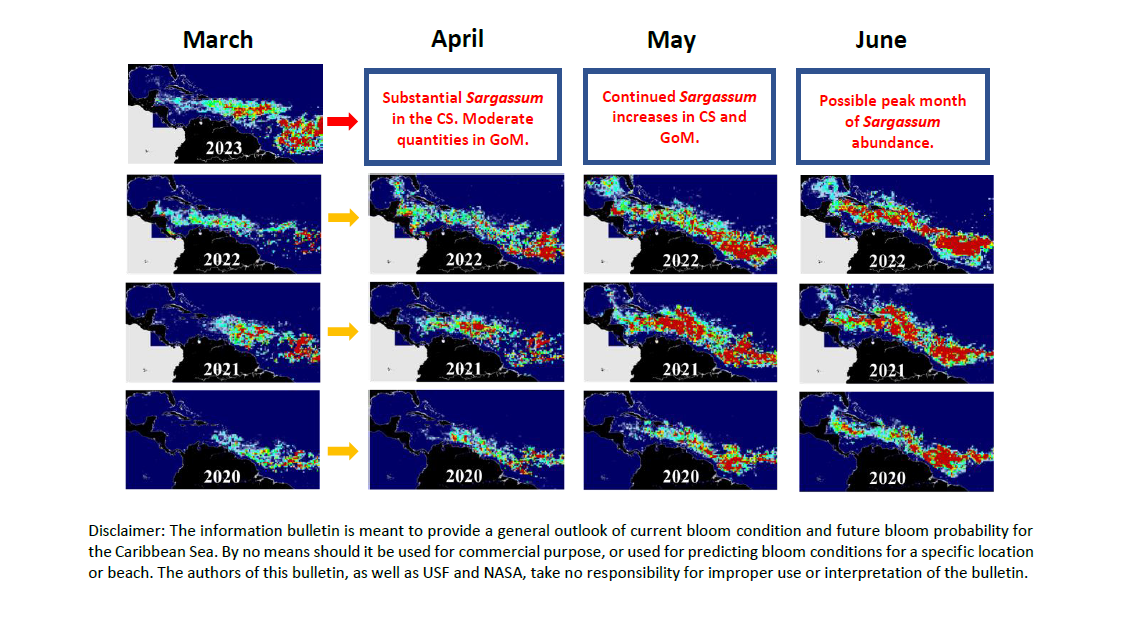The maps above show Sargassum abundance, with warm colors representing higher values. The Sargassum quantity in the Great Atlantic Sargassum Belt (extending from west Africa to the Gulf of Mexico) continued the overall increasing trend, again setting a record abundance (~13 million tons) for this time of year. Additionally, the low quantity recorded in February was determined to be the result of persistent cloud cover in the eastern Atlantic.
Such a record-high quantity for the month of March is mostly due to Sargassum in the central East Atlantic. In the central West Atlantic, the Caribbean Sea, and the Gulf of Mexico, Sargassum quantity all exceeded the 75th percentile for the same month between 2011 and 2022 but did not reach the historical record. As a result, major beaching events are inevitable around the Caribbean, along the ocean side of Florida Keys and east coast of Florida, although the exact timings and locations are difficult to predict.
Looking ahead, the total Sargassum quantity will continue to increase, and Sargassum in the east Caribbean will continue to accumulate and migrate westward, some of which will be transported to the Gulf of Mexico to impact Florida. As previously predicted, although the peak month of June or July is several months away, there is already a sign that this year’s Sargassum bloom will likely be the largest ever recorded, with major impacts throughout the next few months. We will continue to closely monitor and track Sargassum in each region, with more summary updates provided by the end of April 2023. Meanwhile, daily updates through near real-time imagery can be found under the Sargassum Watch System (SaWS, https://optics.marine.usf.edu/projects/saws.html).
Clarification: some news reports called this year’s Sargassum bloom a giant “blob.” In reality, however, the bloom refers to Sargassum clumps and mats scattered randomly within the 5000-mile Sargassum belt. Although the total quantity is large, the average density within the belt is rather low (<0.1%, i.e., less than 0.1% of the ocean is covered by Sargassum).



